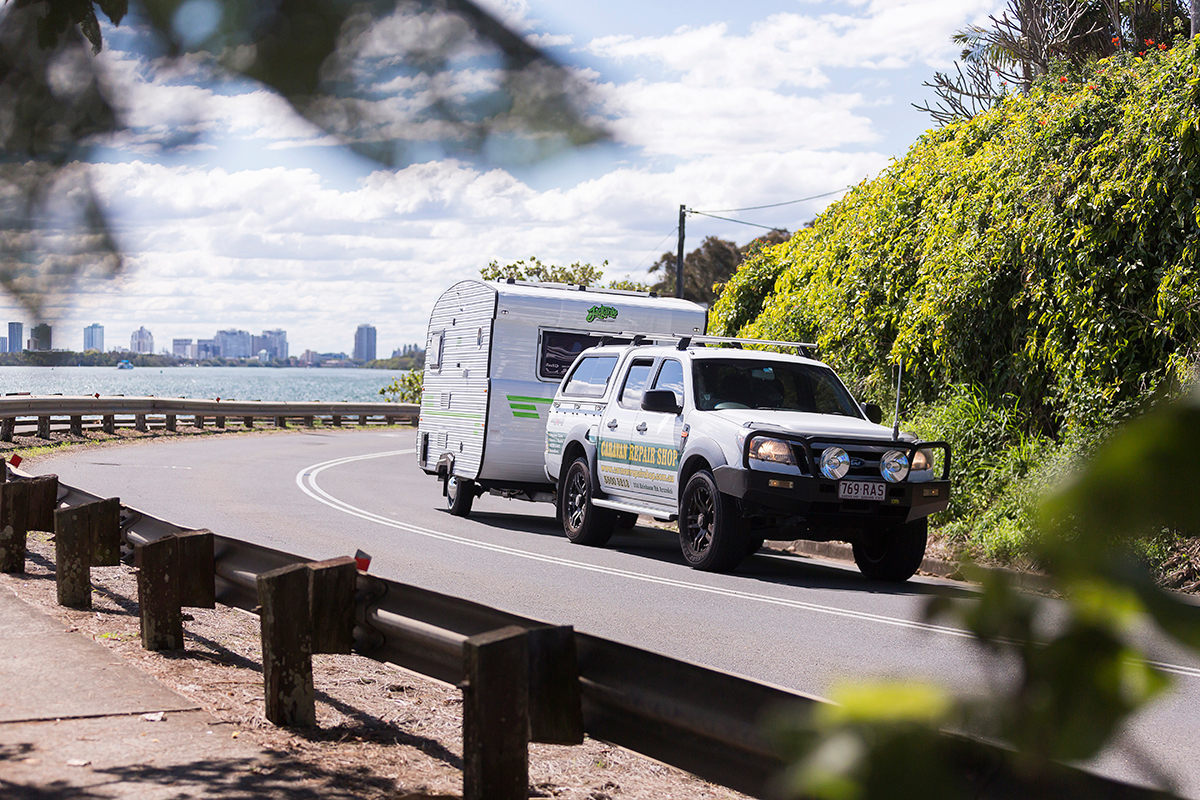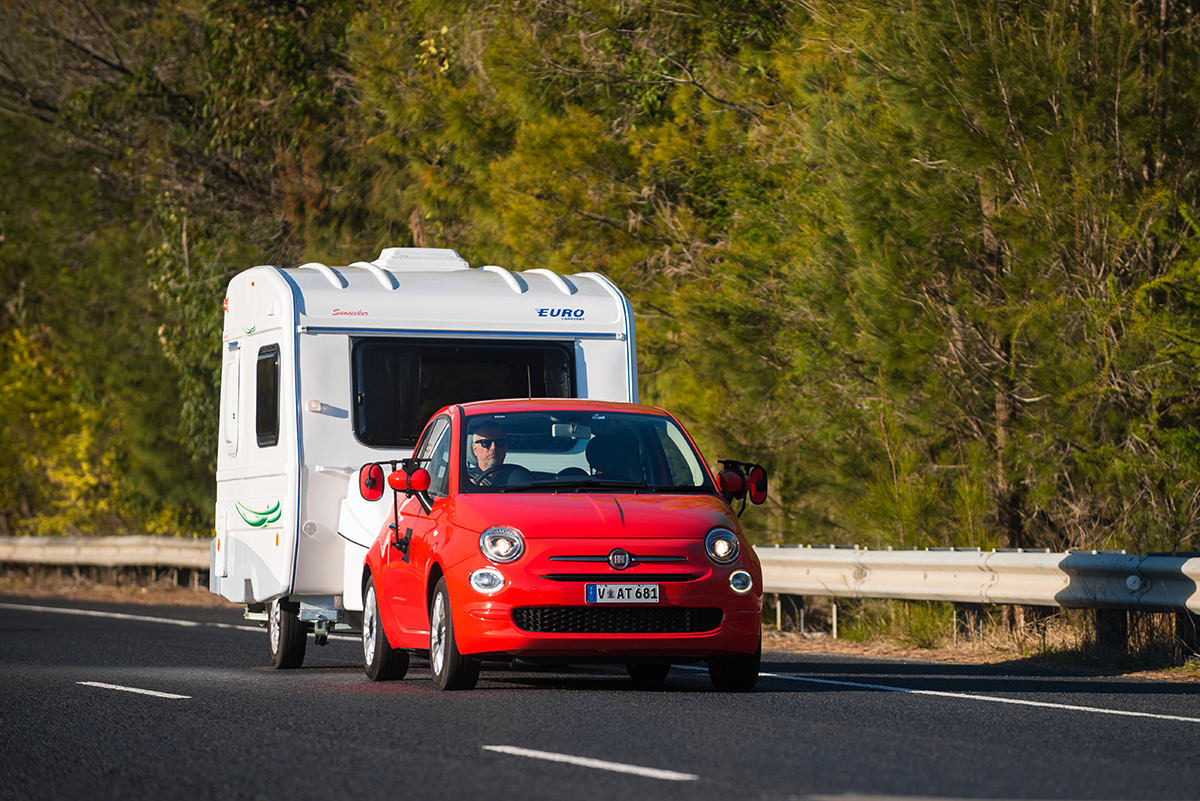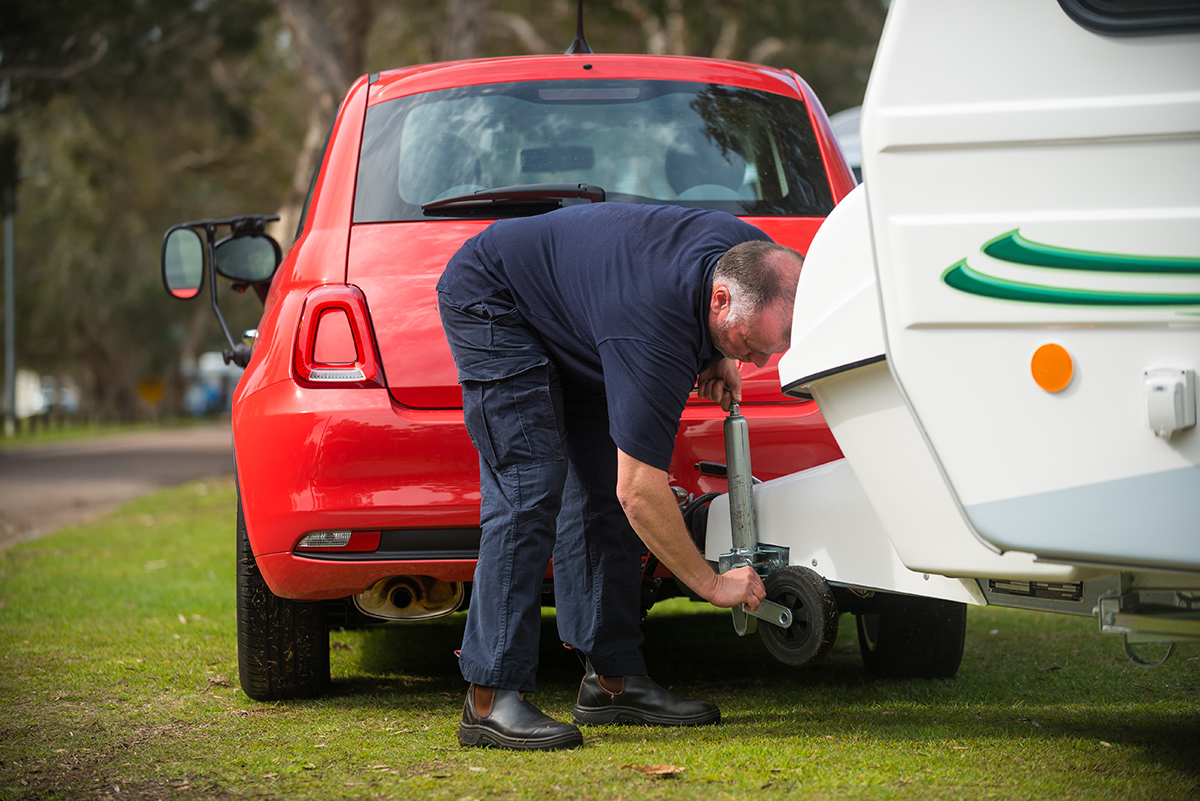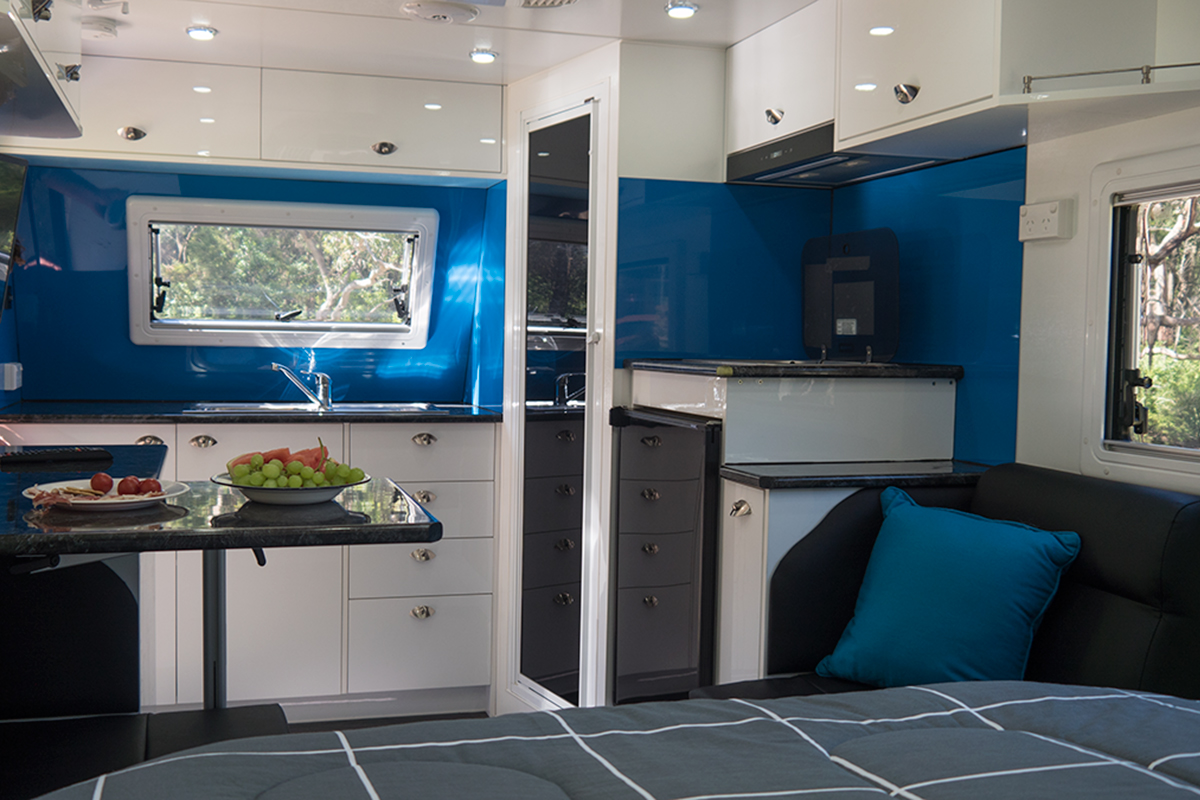1. TOW-ABILITY
Even with years of experience behind the wheel, towing is no easy task. And reversing and turning a long towing combination of car and caravan are two of the most stressful parts of towing, even for experienced towers. And the freedom you gain by being on the road can be inhibited by the fear of turning down an unknown track, which turns out to be a dead-end with no room to turn.

Want more flexibility in where you travel and how you get there? A smaller caravan can offer that.
While everyone’s definition of small caravan is different, let’s say it’s less than 15ft. The tighter turning circle of a van that size (or smaller!) makes turning a breeze, even on narrow roads. And its shorter length means it’s less likely to be badly buffeted by passing trucks or road trains.
And a van that’s easier to handle also means a less stressful and, ultimately, less exhausting and much safer driving experience.
2. FUEL ECONOMY

It should go without saying that towing a smaller and lighter van should pay dividends at the fuel bowser, compared to a longer, heavier rig. We’re all aware of the difference in fuel economy when we are towing compared to when we’re not, so putting a shorter, lighter van on the ball will fall somewhere in the middle, depending on conditions and your vehicle.
3. CHOICE OF TOW VEHICLE
Speaking of vehicle, you’d be forgiven for thinking that the only way to get out and enjoy the caravanning lifestyle is to splash out on a new caravan and a hefty new tow vehicle able to tug it. But the reality, for many, is that they can’t afford both, and have to make do with the car in their garage today, or a smaller, cheaper option than a full-size 4WD.

Many caravan manufacturers have also realised this and there’s been a groundswell of vans hitting the market under the popular ‘Prado-friendly’ weight limit of 2500kg. However, with a new Prado setting you back at least $55K, that’s not always an option, either.
So choosing a smaller, lighter van with a lower Tare and ATM will allow you to look at a much wider selection of non-conventional tow vehicles such as smaller SUVs (think, Subaru Forester, Holden Trailblazer, Nissan X-Trail, etc) and even sedans and sportwagons. The lighter your van, the greater your range of suitable tow vehicles.
4. MANUAL HANDLING

We’re not all wizards at reversing a caravan so the ability to maneuver a caravan by hand, when required, is an underrated feature. Most new caravans are built with grab handles on the front and rear, however, most full-size caravans are actually too heavy to move by hand. But smaller, lighter caravans are, making getting into just the right position on your caravan park site a breeze. Granted, you may still need two or three people to move an 1800kg van, but it can be done!
5. INNOVATION

Every man and his dog is building 20ft caravans with a front island bed, mid-kitchen and full-width rear bathroom these days. The method is popular, proven and easily rolled out. Fitting all (or at least, most!) of the features that modern vanners want into a 12-15ft van, however, is a completely different proposition for caravan builders. And what you inevitably end up with is a caravan with an innovative interior design and layout, where every inch of space has been carefully thought-out and arranged just so. If you’re someone who likes to stand out from the crowd, this is definitely something to think about.
I was gobsmacked to discover that a 12ft van I saw recently had a combo bathroom, kitchen bench, bed, storage and dinette inside – I’ve seen much larger vans that couldn’t fit all of that in!
MEET THE AUTHOR
Laura Gray
An RV journalist working across Australia’s premier caravanning and camping magazines for the past five years, Laura is also a judge at the annual Best Aussie Vans awards. She has been camping in the great outdoors since the of two, when she was packed, by day, into a Toyota LiteAce van and, by night, into a brown canvas tent with her parents and two siblings for an extended trip around the vast playground that is northern Western Australia.





